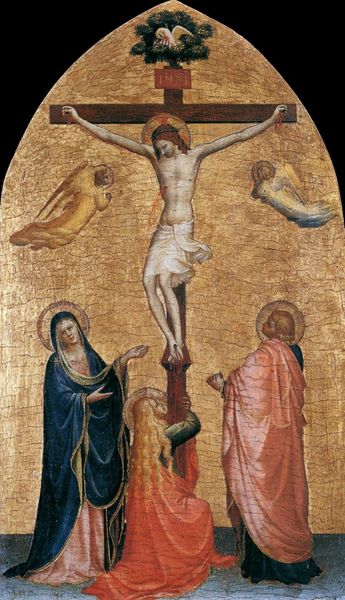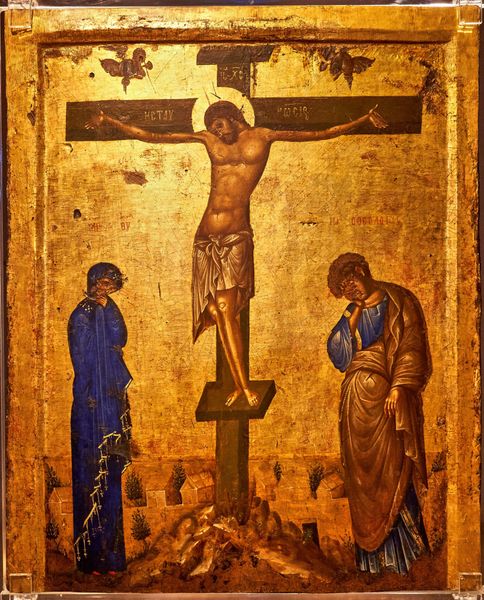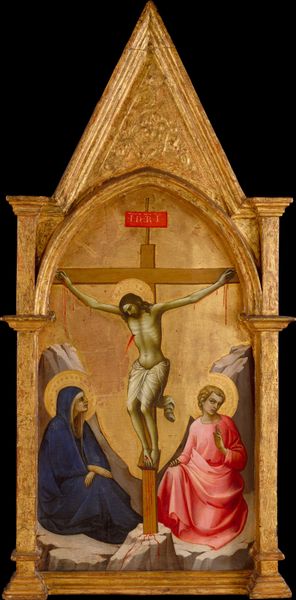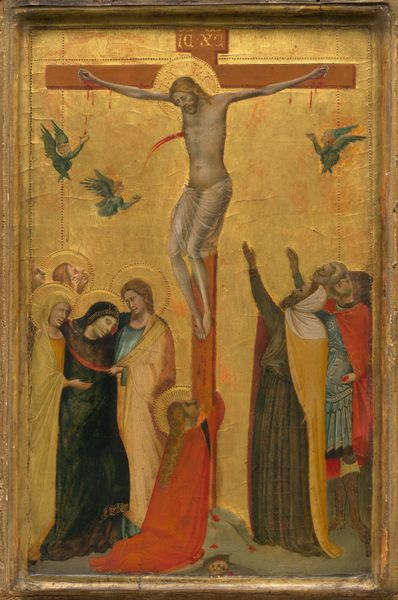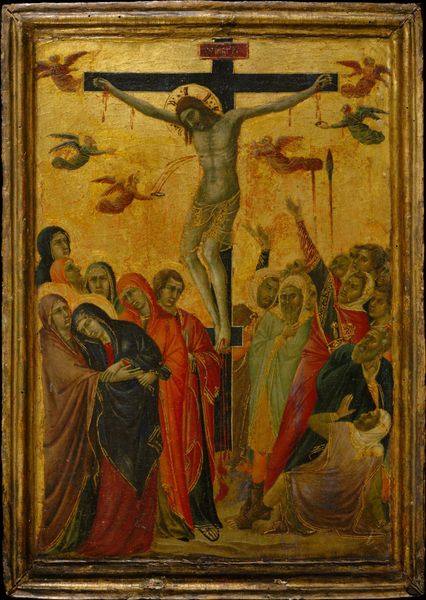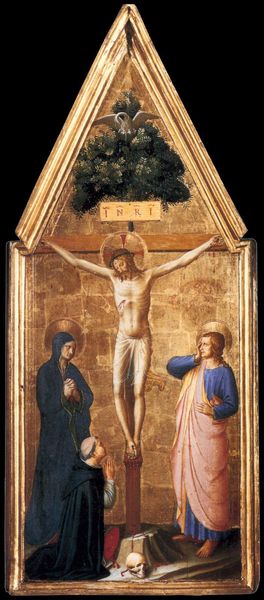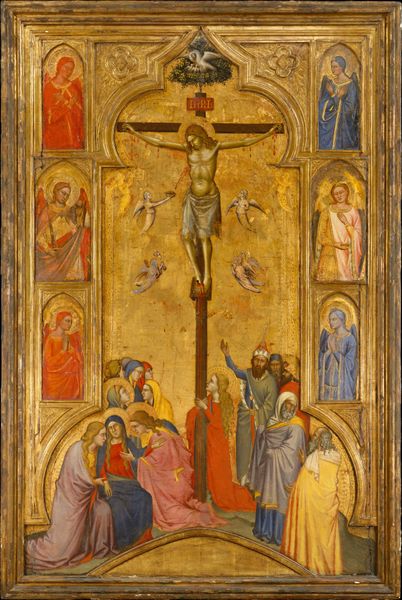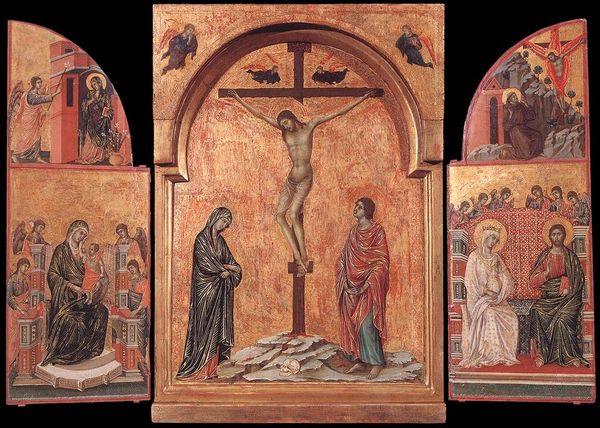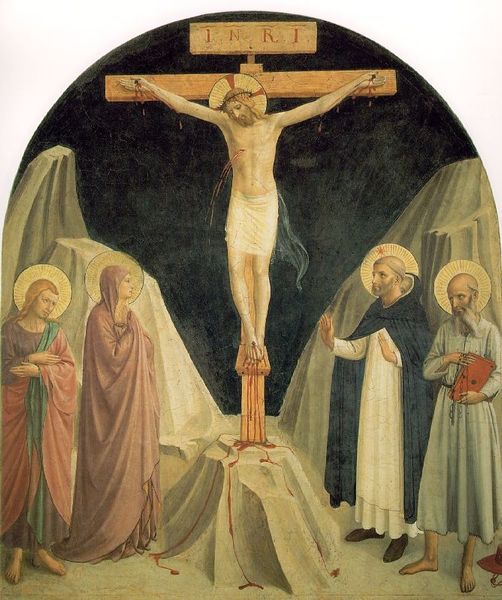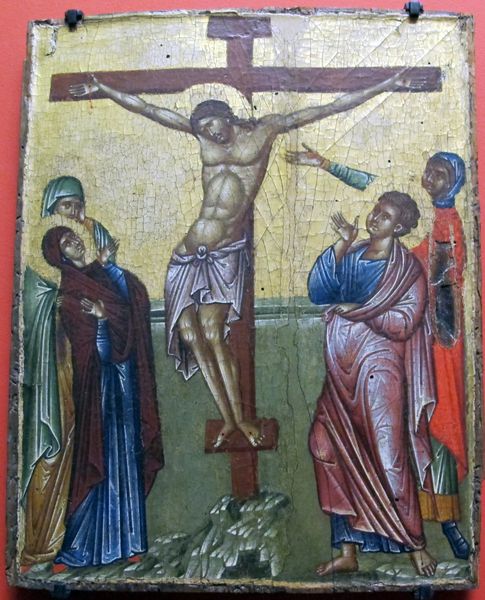
tempera, painting
#
portrait
#
tempera
#
painting
#
figuration
#
oil painting
#
history-painting
#
italian-renaissance
Copyright: Public domain
Editor: Luca di Tommè’s *Crucifixion* is a tempera on panel, and even without knowing much about it, the emotional intensity just jumps out at you. It makes me wonder how this type of panel would function for viewers in the Italian Renaissance. How can we interpret it? Curator: Given the context, consider how the Church shaped artistic production. The depiction of Christ's crucifixion wasn't just about illustrating a biblical event; it was a powerful tool to reinforce religious doctrine and inspire piety, don't you think? This specific image served a function: perhaps adorning a side chapel or as a processional image for a confraternity. What elements stand out in achieving that emotional effect? Editor: The stylized blood, the halos, but especially the sorrowful expressions, seem designed to move the viewer to feel remorse and maybe devotion? How might where this was displayed have impacted its meaning? Curator: Absolutely. Placement within a church or public space significantly influenced its reception. Light, proximity, even the rituals performed before it - incense, chants, prayers - these elements amplified the experience and fostered a deep connection with the divine. We can explore the socio-political tensions of the time, the wealth disparity that would inform its understanding too. What kind of a patron might commission such a work, given its apparent richness of detail? Editor: Someone wealthy, but possibly also devout and wanting to showcase their piety, using the work almost as a symbol of their status, right? Curator: Precisely! And, more broadly, reflect on how access to this work shaped societal beliefs, especially about salvation, authority, and collective identity during the Renaissance. It powerfully shows the interplay between artistic expression, political power, and social consciousness. Editor: That's incredible to think about. The purpose was beyond just devotional for sure, because the imagery helped shape their worldview and cement power structures. Thanks so much for pointing this out! Curator: The function and message are intrinsically linked; both make it such a significant work. Now, I look at it through fresh eyes too!
Comments
No comments
Be the first to comment and join the conversation on the ultimate creative platform.

